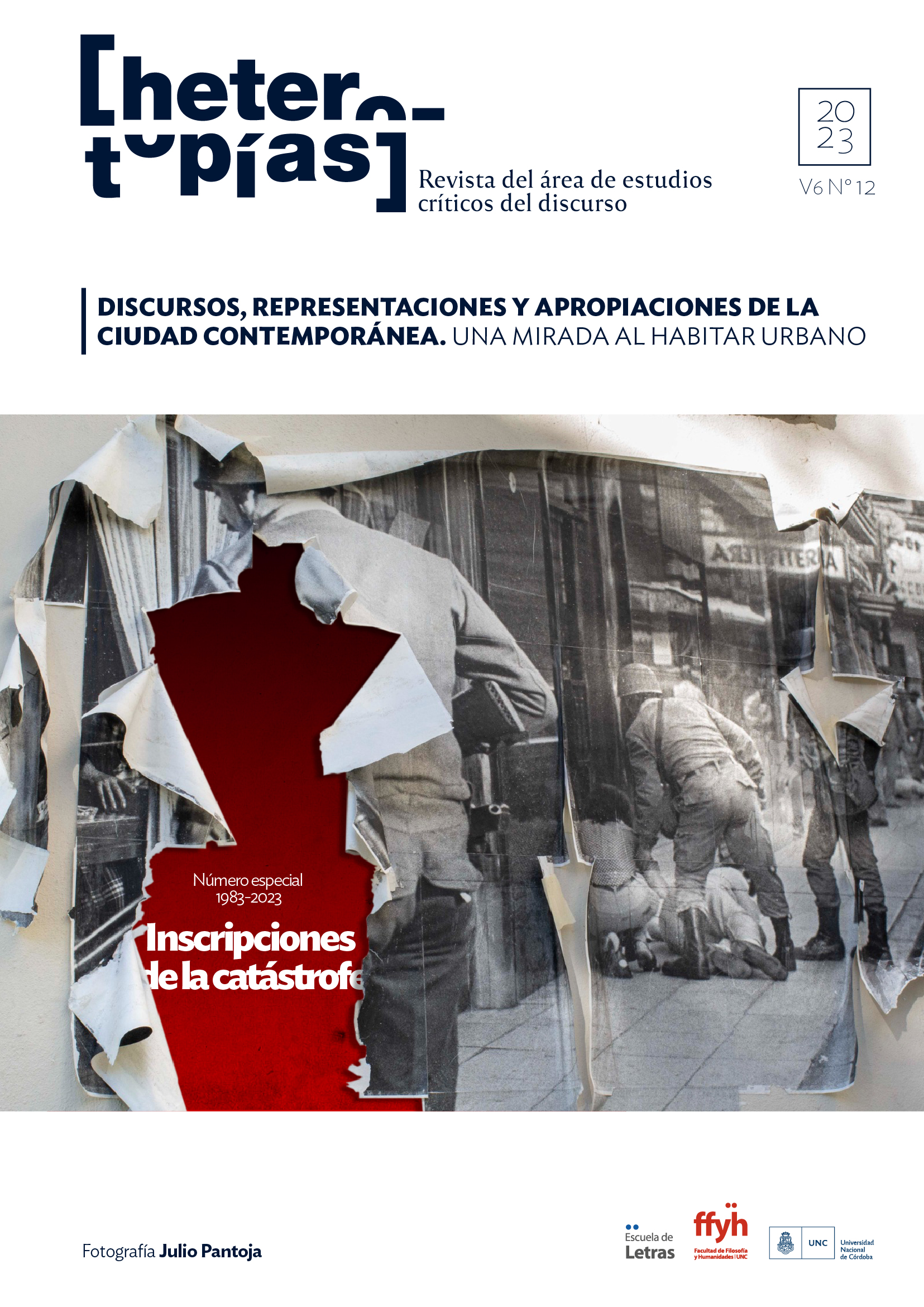Governmental enclaves in Latin America Urban-architectural strategies in two cities
Main Article Content
Abstract
The text proposes to reflect on two project strategies with which the cities of
Córdoba (Argentina) first and Medellín (Colombia) later assumed the challenge of
expanding the presence of the municipal government in the urban territory. The modalities
of selection of the authors of the works, the development of the architectural programs, as
well as the location of the sites where the Community Participation Centers (Córdoba,
Argentina) and the Articulated Life Units (Medellín, Colombia) were built, make it possible
to understand different ways of thinking and realizing urban-architectural enclaves, in which
place and dwelling play a leading role.
Downloads
Article Details

This work is licensed under a Creative Commons Attribution-NonCommercial-ShareAlike 4.0 International License.
Those authors who have publications with this journal, accept the following terms: Those authors who have publications with this journal, accept the following terms:
a. The authors will keep their copyright and guarantee to the journal the right of first publication of their work, which will be simultaneously subject to the Creative Commons Attribution - Non-Commercial - Share Alike (by-nc-sa) Attribution License; no commercial use of the original work or any derivative works is allowed, the distribution of which must be done with a license equal to the one that regulates the original work.
b. Authors may adopt other non-exclusive license agreements for the distribution of the published version of the work (e.g., deposit it in an institutional telematic archive or publish it in a monographic volume) provided that the initial publication in this journal is indicated.
c. Authors are allowed and recommended to disseminate their work through the Internet (e.g. in institutional telematic archives or on their website) before and during the submission process, which may lead to interesting exchanges and increase the number of citations of the published work. (See The effect of open access).
How to Cite
References
Boixadós, M. C. (2000). Las tramas de una ciudad, Córdoba entre 1870 y 1895: élite urbanizadora, infraestructura, poblamiento. Ferreyra.
Buguñá, P.; Cohen, D.; Cometta, C. (2015). La percepción ambiental de Brasilia. utopía y realidad. Repositorio Digital de la Universidad Nacional de Córdoba. https://rdu.unc.edu.ar/bitstream/handle/11086/17668/Ponencia__Percepci_n_ambiental_de_Brasilia_24-10-15_corregida_para_publicar_23-11.pdf?sequence=3&isAllowed=y
Camargo Ponce de León, G. (2020). DE LOS MITOS DE LA NATURALEZA A LOS LUGARES DE LA CIUDAD. Mitos e imaginarios de naturaleza en las narrativas oficiales del urbanismo de Medellín, 1890 – 2020 [Tesis de maestría, Universidad EAFIT]. Repositorio Institucional Universidad EAFIT. https://repository.eafit.edu.co/handle/10784/29670?locale-attribute=es
Bullaro, L. (2019). Unidades de Vida Articulada (UVA), Medellín, Colombia. Ciudad y Territorio. Estudios Territoriales (51) 200, pp. 429-434. https://recyt.fecyt.es/index.php/CyTET/article/view/76744/47051
Carabajal, Gustavo (2016). Paisajes. A & P Continuidad 5, 6-7. https://fapyd.unr.edu.ar/categoria_publicacion/ap-continuidad/
Gómez Pintus, A. H. (2015). La configuración histórica del Gran Buenos Aires: transformaciones y debates en torno al objeto. Cuadernos de geografía. Revista colombiana de geografía (24) 1, pp. 173-191
Gutiérrez, R. (1983). Arquitectura y Urbanismo en Iberoamérica. Cátedra
Hardoy, J. E. (2015). Las formas de las ciudades coloniales en Hispanoamérica. Repositorio digital FADU-UBA. https://catedrapernautfadu.files.wordpress.com/2015/06/ficha-bibliografica-nc2b08-la-forma-de-las-ciudades-coloniales.pdf
Maidana, Carolina (2014). Territorios indígenas. Entramados de etnicidad y clase. QUID 16, 3, 66-81. https://publicaciones.sociales.uba.ar/index.php/quid16/article/view/1143
Pizoni, C. (2019). Heidegger y la arquitectura. Una mirada hermenéutica para interpretar prácticas teóricas [Tesis de doctorado, Universidad de Mendoza]. Repositorio institucional. https://um.edu.ar/wp-content/uploads/2-LIBRO-TESIS-PIZONI.pdf
Roca, M. A. (2014). La Arquitectura y sus principios. En Miguel Ángel Roca. Centro Cultural Recoleta, pp. 13-14.
Roca, M. A. (2014). Una tipología: ¿Qué es un centro cultural? En Miguel Ángel Roca. Centro Cultural Recoleta, p. 15.
Roca, M. A. (2023, 10 de octubre). Miguel Ángel Roca. https://www.miguelangelroca.com.ar/
Sánchez González, C. (2022). La transformación social y cultural por medio del reciclaje de infraestructuras. Caso de Estudio: Unidad de vida articulada en la ciudad de Medellín Colombia: UVA de La Imaginación [Tesis de maestría, Universidad Politécnica de Valencia]. Repositorio institucional. https://riunet.upv.es/handle/10251/181201
Silvestri, G. (2020). El Lugar común [seminario Web]. Universidad de Buenos Aires, Seminarios de Cultura y Hábitat. https://www.youtube.com/watch?v=G5yFJ9P1WTA
Tombe, L. (2020). Colectivo 720 [seminario Web]. Universidad Andrés Bello, Seminarios del Campus Creativo. https://www.youtube.com/watch?v=O12EyztoNYY
Valencia, N. (2016). La historia de cómo Medellín convirtió sus tanques de agua en verdaderos parques públicos. Plataforma de Arquitectura. https://www.archdaily.co/co/787787/la-historia-de-como-medellin-convirtio-sus-tanques-de-agua-en-verdaderos-parques-publicos
